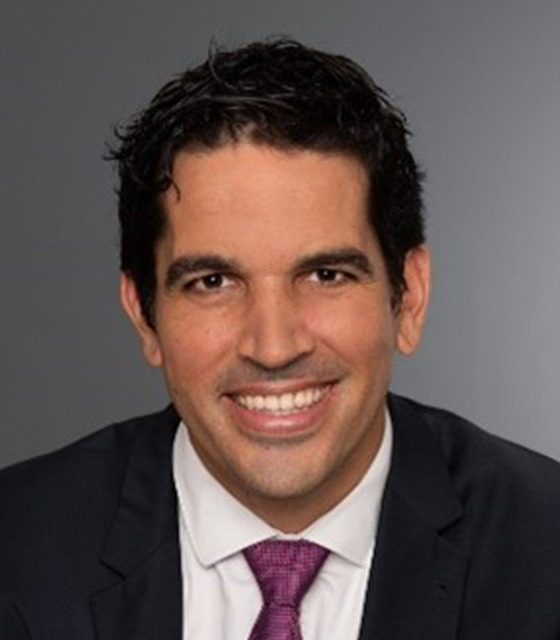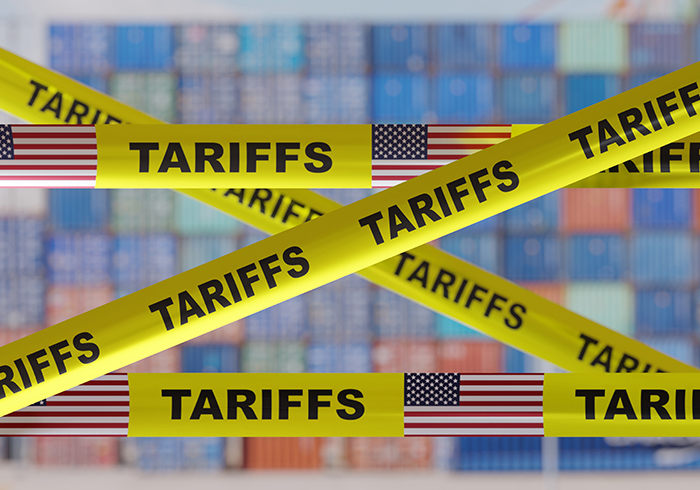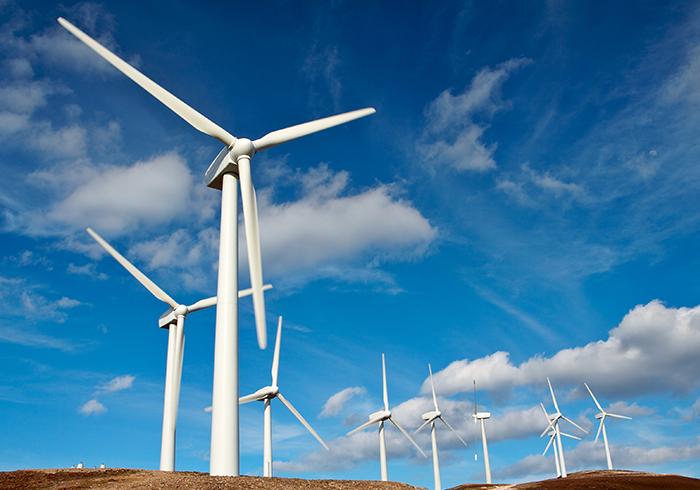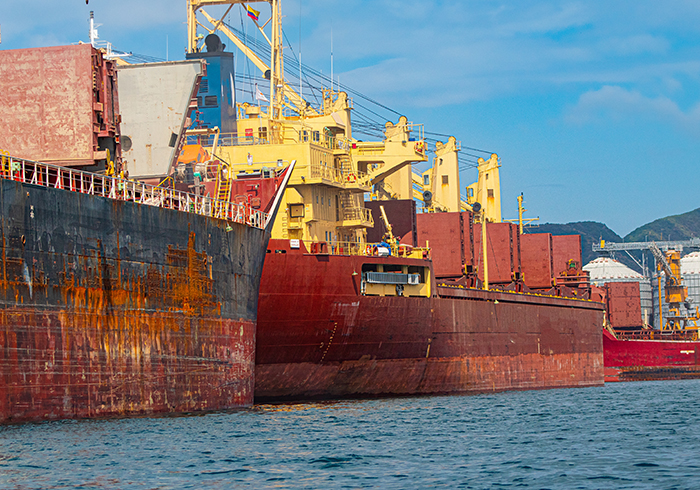Europe’s offshore wind industry has been roiled by project delays, supply chain difficulties and diminishing access to finance. Amid growing fears these market headwinds could hinder the transition away from fossil fuels, policymakers have intervened. Felix Thompson reports.
In the icy waters of the North Sea in early 2023, Swedish energy company Vattenfall had been preparing to build a 1.4 gigawatt (GW) wind farm off the Norfolk coast capable of powering up to 1.5 million homes annually.
But then in August, just weeks before construction was due to begin, Vattenfall suspended the Boreas project, stating that it was no longer tenable due to a 40% increase in costs. Instead, the company opted to record an impairment charge of SKr5.5bn (US$537mn).
“Higher inflation and capital costs are affecting the entire energy sector, but the geopolitical situation has made offshore wind and its supply chain particularly vulnerable,” Vattenfall president and CEO Anna Borg said at the time. “What we see today, it simply doesn’t make sense to continue this project.”
Europe’s wind developers, like those in other regions globally, have felt the repercussions of the Ukraine conflict. Russia’s invasion led to a significant increase in the price of essential materials, such as steel, by as much as 40%.
At the same time, wind farms, capital intensive in nature, have been affected by growing financing costs as a result of interest rate hikes, analysts say.
In September, Britain’s auction for 5GW of offshore wind contracts concluded without a single bid – a stark contrast to the 7GW awarded across five projects in 2022’s auction. Wind developers, hit by rising costs, deemed the auction price unreasonably low.
“In Europe, the situation is less critical in terms of the number of transactions. This being said, there is a time lag. I think we lost approximately one or two years, compared to what we thought the development path would be,” says Olivier Musset, global head of energy at Société Générale.
Pointing to the UK’s failed auction, he notes there was clearly “something wrong” in the market.
The issues felt in Europe’s offshore wind sector have come at a time when states are scaling up their energy transition goals, leading to fears the industry will struggle to grow capacity at a sufficient rate.
Britain, the world’s second-largest wind market behind China, has a goal of increasing offshore wind capacity from 14GW to 50GW by 2030.
The European Union has outlined similar plans to more than double its overall wind capacity to 500GW, part of wider efforts to boost the share of renewables in its energy mix to 42.5% by 2030.
But, according to industry association Wind Europe, the sector is forecast to fall short of these aims. In a February analysis, it notes the EU installed 16.2GW of onshore and offshore wind capacity in 2023, yet this is still “only half” of what it should be building to meet targets.
Manufacturer woes
As project developers grapple with headwinds caused by the Ukraine crisis, there is mounting concern a lack of supply chain capacity is also stifling Europe’s offshore wind development.
The £9bn Dogger Bank project under development off the UK’s Yorkshire coastline promises to be the world’s largest wind farm once construction of all three phases are finalised, due for 2026.
Yet in February, SSE announced its first phase, Dogger Bank A, may not be completed until next year due to difficult weather conditions, supply chain snarls and an inability to secure installation vessels.
A shortage of vessels capable of transporting the various parts of an offshore wind turbine – some measuring over 250m, twice the height of the London Eye – is emerging as a key chokepoint globally.
A rapid increase in turbine sizes has deterred investment in specialist ships, as a vessel built one year may be too small for the next generation of technology, explains Adam Beaumont, interim CFO at offshore wind developer Northland Power.
“You are not going to want to build vessels that are destined to become obsolete in a couple of years’ time,” he tells GTR.
Other aspects of offshore wind supply chains are also dampening prospects for Europe’s energy transition.
“There are particular bottlenecks in making the foundations for offshore turbines,” says Fred van Beers, CEO at SIF, a manufacturer of monopiles, a type of foundation used to fasten turbines to the sea floor.
“Europe can make around 500 of them a year today but needs to be making 1,500,” he said in March last year.
In theory, business should be booming for Denmark’s Vestas and Spanish-German firm Siemens Gamesa, two of the world’s largest turbine manufacturers – yet they are struggling to translate buoyant orders into profits.
Last year, Siemens Gamesa posted annual net losses of €4.6bn in the wake of quality control problems in its onshore turbine business.
Vestas achieved better results, announcing in February that it scored a full-year operating profit of €231mn in 2023, a recovery from a €1.2bn loss a year earlier, yet warned of difficult times ahead.
“Continued geopolitical volatility as well as slow permitting and insufficient grid build-out across markets are expected to cause uncertainty in 2024,” said Vestas CEO, Henrik Andersen, in February.
Permitting has been a longstanding issue for Europe’s offshore wind industry and slowed development, experts say.
Wind developers must obtain various permissions before a project can commence, such as national grid permits and environmental impact assessments. But the process of securing these approvals can take years to complete.
“If you look at big manufacturers like Vestas or Siemens Gamesa, they need to plan their production years in advance,” says Peter Boeskov, chief commercial officer at the Export and Investment Fund of Denmark (EIFO), who argues permitting issues are hindering a “constant flow” of projects in Europe.
“The more predictable these projects are the better for them and the easier it will be to lower the unit cost,” he tells GTR.
Governments step up to the plate
The issues gripping Europe’s wind industry have irked policymakers, who fear the region’s energy transition goals and longstanding turbine manufacturing dominance may be in jeopardy.
“It’s imperative for Europe to ensure that we have our own manufacturing industry when it comes to wind. We don’t want the wind industry to go the same way that solar panels went – an industry completely taken over by China,” Boeskov says.
“Relying on turbines from China would create a dependence that, based on what we’ve seen in the last few years, is very unhealthy.”
European Commission officials have voiced similar concerns, warning Chinese turbine manufacturers are offering heavily reduced prices – up to 55% less – than firms based in the EU.
In recent months, the EU has intervened and rolled out emergency aid for the hard-hit sector.
In October, the European Commission unveiled its solution, a Wind Action Plan, vowing “immediate” regulatory and financial backing for project sponsors as well as manufacturers on the continent.
“The EU cannot double the pace of wind energy deployment without a healthy, sustainable and competitive wind supply chain,” the Commission said in an accompanying communique.
“And the wind industry cannot be healthy without a clear and secure pipeline of projects, attracting the necessary financing and competing on a level playing field globally,” the EU body added.
“All [of the] largest wind turbine manufacturers reported significant operating losses in 2022” and “we are nowhere near” meeting the EU’s end-of-decade installation targets, the Commission said.
The EU’s wind plan consists of six main pillars of “concerted action” for the sector, including improved auction design, faster permitting, growing the skills of Europe’s workforce and boosting access to finance through state de-risking bodies such as the European Investment Bank (EIB) and export credit agencies (ECAs).
As part of the wind plan, the EIB unveiled a €5bn counter-guarantee scheme for European wind manufacturers in December. The initiative will enable them to secure advance payment and contract guarantees from private banks, whose capacity, it outlines, had become strained.
Wind Europe cheered the move, with the association’s CEO, Giles Dickson, noting the tool would “improve access to finance and unlock investments in new wind farms and then factories”.
“It’s great the EIB is already delivering its actions from the wind power package,” Dickson said.
Weeks earlier, the German state unveiled a similar relief package for Siemens Energy, amid fears the embattled wind manufacturer’s booming €110bn order book was potentially at risk of collapse.
The deal included €7.5bn in project-related guarantees from the government, part of a wider €15bn agreement backed by other stakeholders, including banks.
As reported by Reuters, lenders had become reluctant to extend guarantees to the manufacturer, after problems emerged within the onshore turbine division of its subsidiary, Siemens Gamesa, and S&P cut the group’s long-term credit rating to BBB-, just one rank above junk.
ECAs bonding
ECAs that GTR has spoken to say they are working to plug similar gaps in the financial markets, both in aid of Europe’s climate goals but also to ensure the continent’s energy independence.
According to Boeskov at EIFO, the wind plan suggests export credit providers should be doing “even more” to help Europe’s wind supply chain, and an area where they are “looking to add capacity” is via bonding facilities.
ECA involvement in the bonding market is becoming necessary as offshore wind projects “get bigger and bigger,” Boeskov says, while noting financing has been a constraint for manufacturers, despite “huge and growing” order books.
“The manufacturers have to place bonds – performance bonds, advance payments, bid bonds – and frankly, there has not been enough capacity in the commercial banking market,” he says.
Boeskov expects to see ECAs contributing in this area soon and suggests their exposures to bonding facilities could be significant.
He could not disclose any specific details about potential deals due to confidentiality reasons, yet highlights the size of the German state’s Siemens guarantee package: “This gives an idea as to where the market is going.”
While the Danish agency is yet to sign any bonding transactions, EIFO is in discussions with various manufacturers in the energy transition sectors, he adds.
Par Granlund, senior underwriter for infrastructure at Sweden’s EKN, says the agency is also seeing “a lot of increasing demand” for contract guarantees from key Swedish suppliers to large wind infrastructure projects, as well as those building interconnection links to national electricity grids.
“Swedish companies come to us and the banks for contract and counter-guarantee needs. Our counter-guarantee usage has increased a lot in 2023 and this trend will continue in 2024,” he tells GTR.
The whole supply chain
ECAs are also developing novel untied approaches to support companies throughout offshore wind value chains – not just large turbine manufacturers.
“All the way down the [offshore wind] supply chains into the subcontractors and suppliers, ECAs are deploying products, including trade products and guarantees, to boost liquidity,” says Cécile Camilli, global head of development and structured export finance at Société Générale.
They are developing a “whole new generation of products and solutions” to support the energy transition and to advance industrial dominance in emerging sectors, such as offshore wind, Camilli says. “They are reinventing themselves,” she tells GTR.
UK Export Finance (UKEF) has deployed its export development guarantee product in “various forms” in aid of offshore wind, says Tim Palmer, the ECA’s head of renewables and transition.
In November, UKEF signed its first invest-to-export guarantee for the UK subsidiary of Korea’s SeAH Wind, covering a £367mn facility from HSBC and Standard Chartered that backed the construction of a factory in northeastern England.
Once built, it is slated to assemble the largest monopiles in the world, for use both in the North Sea and abroad.
The same month, UKEF issued a guarantee for a £370mn loan from a group of banks – Citi, Crédit Agricole, DNB, HSBC and ING – enabling vessel operator Seaway 7 to develop its UK sites and fund its current fleet.
“An interesting development has been the fact ECAs are now providing guarantees for large capex lines…at the corporate level,” Camilli says.
She highlights a trend of domestic untied facilities collectively worth billions of euros being extended to large utilities such as RWE and Iberdrola. The two deals were covered by agencies from Denmark and Norway, respectively.
Increasingly, ECAs are also working to support manufacturers of installation vessels, amid market shortages.
In December 2023, offshore wind vessel owner Cadeler signed a €550mn deal with a group of banks, led by DNB and comprised of revolving credit facilities as well as an EIFO-covered €100mn term loan, which enabled the firm to retrofit its vessels and so transport larger turbines.
“Greater capacity in this part of the value chain is essential,” Boeskov tells GTR.
New markets, new tech
As European countries work to rapidly scale offshore wind capacity, the export credit industry is also preparing for a glut of project finance opportunities in as yet untested waters.
“Historically… European projects have been financed without ECAs except when the size of the deal was huge, such as Dogger Bank,” explains Camilli.
But she suggests broader shifts in the sector, not least the energy transition and a growing focus on ECAs as national policy tools, could boost offshore wind deal-making activity in Europe.
She flags the €4.4bn financing for Poland’s Baltic Power project as indicative of a potential new trend of export credit and development finance institutions teaming up on bumper wind deals in Europe.
In September, Polish energy company Orlen and Northland Power secured a package from over two dozen financial institutions, including commercial banks, ECAs from Denmark, Canada and Germany, the EIB and the European Bank for Reconstruction and Development.
The Baltic Power transaction’s inclusion of ECAs and development finance institutions (DFIs) was an “interesting, new development” for the market, Camilli says.
“[Baltic Power] was a new jurisdiction; the size was quite important. In terms of scale, there was also rationale to introduce ECAs and DFIs. As we face those new areas, whether it’s technologies, debt size or new territories, it will make sense for such partners to complement one another.”
Even so, Boeskov notes, the transaction relied in large part on the flexibility of the Polish government.
“Originally, the tariff was in Polish złoty, but they were very flexible and pegged it to the euro, which made the financing package far easier to complete… [ensuring] there was no foreign exchange risk.”
Poland has emerged as a major new wind market and set a target of 5.9GW in installed capacity by 2030, driven by eight major projects.
But ECAs are also set to boost activity away from the North and Baltic Seas.
“Sooner or later there will be offshore wind in Italy, for example; there will be offshore wind in Spain. For these first projects, banks will initially ask whether the supply chain is equipped to execute the job. ECAs will say okay: ‘By the way, we are happy to take those risks,’” Société Générale’s Musset says.
Floating offshore wind is another potential area where ECA help may be enlisted.
In theory, floating platforms will allow developers to access waters deeper than 60 metres with stronger winds, offering a boon to existing markets such as the UK and China, but also new ones, like the US West Coast.
While the turbines are the same as conventional wind farms, the structures are tethered to the seabed with mooring lines and anchors.
“ECAs will also be relevant due to the development of floating offshore,” says Camilli. “Technologically, there will be big progress and, of course, the need to bear some additional risk. That will likely be one market where ECAs will be needed.”
Nevertheless, for now, such deals are still some way off.
In the UK alone, it’s estimated £4bn will be required to upgrade ports for the rollout of floating wind, and there are other challenges. There is currently a vast cost disparity between floating and conventional wind, experts say, due to a lack of technology standards and supply constraints.
UKEF’s Palmer tells GTR the agency has had “no formal applications” related to floating wind projects, though it is “having conversations”.
“Because of the last couple of years, floating [offshore wind] is naturally going to be a little bit pushed out in terms of reaching commercial scale. But absolutely, ECA support is going to be needed to make floating projects work,” says Northland Power’s Beaumont.







